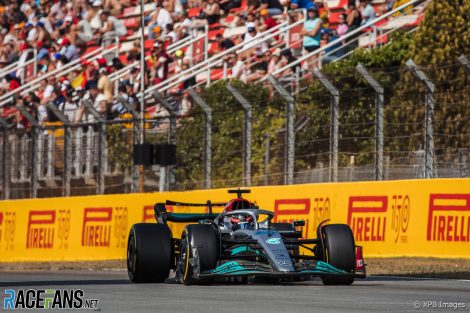The Spanish Grand Prix has a reputation for producing some of the most consistently insipid, unremarkable races of any circuit on the Formula 1 calendar.
A combination of long, sustained corners and an awkward chicane leading onto the main straight proved a major hindrance to racing in Formula 1’s heavily aero-sensitive cars affected by dirty air. With drivers so familiar with the course through countless laps in testing, the event has become known as the ‘Noah’s Ark’ race, where the ranking roughly reflects the field’s performance order from the fastest cars at the front to the slowest car occupying the back row.
But there are several factors which indicate Sunday’s Spanish Grand Prix could be one of the more eventful for many years.
Abnormally high temperatures across the weekend – even by southern Spain’s standards – mean tyres are going to be punished around the already abrasive and demanding circuit. Drivers are fully aware of the challenge that is awaiting them tomorrow.
“I think it’s going to be a chaotic race tomorrow,” Mercedes’ George Russell predicted after qualifying. “There’s going to be a number of stops, I believe, for everybody.”
Even Pirelli, who brought the hardest possible tyre compound combination to the Catalunya circuit for this weekend, accept that tyre wear is likely to have a major impact on how the race pans out.
“Degradation will definitely be a factor tomorrow with temperatures predicted to be perhaps even hotter than today,” said Pirelli’s Mario Isola, “This is likely to be the most challenging race of the year for tyres so far, where management and strategy will be key to success.”
As a result, it is likely that a minimum of two stops will be the way to go during the race. Pirelli believe that even a three stop could be viable, recognising the historically low risk of Safety Car appearances at the 4.6-kilometre circuit.
Advert | Become a RaceFans supporter and

